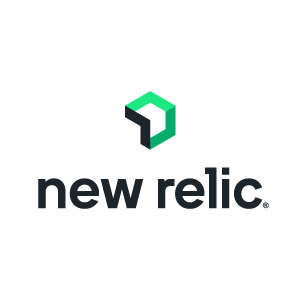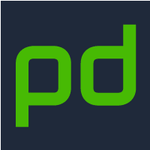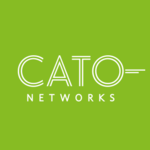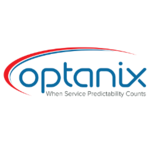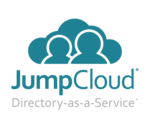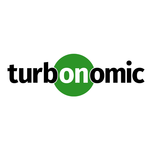Top It Management Softwares
IT Management software plays a crucial role in modern business environments. It facilitates the streamlined oversight of technological resources, enabling companies to manage their IT infrastructure effectively. From tracking hardware assets to monitoring software deployments, these solutions ensure optimal performance and security. They offer tools for network monitoring, issue resolution, and re... Read More
122 companies found
LogicMonitor
Product Description
LogicMonitor is an intuitive software solution designed to help businesses keep tabs on their IT infrastructure with ease. Aiming to simplify complex tasks, this platform provides a comprehensive view of all your systems, applications, and services in one convenient place. Whether you are monitoring servers, networks, or cloud services, LogicMonitor helps you stay ahead of potential issues before ... Read More
Users
- • No Data
Industries
- • No Data
Market Segment
- • No Data
Product Description
New Relic is a trusted partner for businesses that rely on software and applications to drive their success. It provides a comprehensive platform designed to help you monitor, manage, and improve your digital experiences. If you’re looking to keep your apps running smoothly and your customers happy, New Relic could be just what you need. Think of New Relic as a toolkit for your software. It gives... Read More
Users
- • No Data
Industries
- • No Data
Market Segment
- • No Data
Product Description
PagerDuty is a reliable tool designed to help businesses handle emergencies and important issues smoothly. Simply put, it's like having a system that makes sure you never miss critical alerts and can respond quickly when problems come up. Whether it's an online service going down, a technical hiccup, or any kind of urgent situation, PagerDuty steps in to help manage it. The platform is easy to us... Read More
Users
- • No Data
Industries
- • No Data
Market Segment
- • No Data
Cato Networks
Product Description
Cato Networks is a company that makes it easier for businesses to manage their network and security needs. Think of it as a one-stop-shop where everything related to your company's network security can be handled in one place. With Cato Networks, you don't need multiple vendors or complex systems; it simplifies things by bringing secure connections and data protection together. This means that w... Read More
Users
- • No Data
Industries
- • No Data
Market Segment
- • No Data
Product Description
Optanix is a software company that provides solutions designed to help businesses maintain smooth and efficient operations. They offer a platform that focuses on monitoring and managing IT infrastructure, ensuring that all systems are working seamlessly. For businesses that rely on uninterrupted digital services, Optanix stands out as a reliable partner. What makes Optanix unique is its ability t... Read More
Users
- • No Data
Industries
- • No Data
Market Segment
- • No Data
Product Description
JumpCloud is a software solution designed to make managing IT infrastructure easier for businesses. With JumpCloud, companies can streamline how they handle user access, devices, and data. It's especially useful for businesses that are spread out or have employees working from different locations. At its core, JumpCloud helps you manage user identities. This means setting up who can access what w... Read More
Users
- • No Data
Industries
- • No Data
Market Segment
- • No Data
Product Description
IPAM, which stands for IP Address Management, is crucial for any organization that relies on a network of devices. Whether it's a small business or a large enterprise, keeping track of IP addresses and making sure they are correctly assigned is essential for smooth operations. IPAM software helps manage this by automating and simplifying the process. With an intuitive interface, the software allo... Read More
Users
- • No Data
Industries
- • No Data
Market Segment
- • No Data
Product Description
NinjaOne is a versatile software platform designed to help small and medium-sized businesses manage their IT operations smoothly. Whether you're juggling multiple devices, troubleshooting issues, or ensuring your systems are updated, NinjaOne aims to make these tasks straightforward. This platform streamlines many aspects of IT management, including monitoring, remote control, and patch manageme... Read More
Users
- • No Data
Industries
- • No Data
Market Segment
- • No Data
BetterCloud
Product Description
BetterCloud is a company focused on making it easier for businesses to manage and secure their software applications. As more companies use cloud-based tools to run their operations, keeping track of all these different apps can get complicated. That’s where BetterCloud steps in to help. BetterCloud provides a unified platform where businesses can see and control all their cloud applications in o... Read More
Users
- • No Data
Industries
- • No Data
Market Segment
- • No Data
IBM Turbonomic
Product Description
IBM Turbonomic is a software solution designed to help businesses manage their IT resources more effectively. Whether you run applications in the cloud, on-premises, or in a hybrid environment, IBM Turbonomic aims to make your life easier by optimizing the performance and cost-efficiency of your IT infrastructure. Imagine you have various applications and systems running, and they all need a bala... Read More
Users
- • No Data
Industries
- • No Data
Market Segment
- • No Data
What is IT Management software and how does it benefit businesses?
Understanding IT Management Software
IT Management software is a critical tool designed to help organizations efficiently manage their information technology resources. This includes hardware, software, networks, data storage, and IT services. The primary purpose is to optimize these resources to meet business goals while ensuring a secure, reliable, and sustainable IT environment.
These solutions often integrate various modules or functionalities, such as network management, system administration, service management, and security management. Each module addresses different aspects of an IT infrastructure, working together to streamline complex processes.
Streamlining Operations
One of the most significant benefits of IT Management software is its ability to streamline operations. By automating routine tasks, businesses can reduce the time and effort spent on manual operations, such as software updates, network monitoring, and data backups. This automation leads to increased efficiency, allowing IT teams to focus on more strategic initiatives that align with business objectives.
Enhancing Security
Security is a critical concern for businesses in today's digital landscape. IT Management software provides robust security features to protect against threats and vulnerabilities. This includes tools for monitoring and managing access controls, detecting and responding to security incidents, and ensuring compliance with industry standards. By implementing these security measures, businesses can safeguard their sensitive information and maintain customer trust.
Improving Resource Management
Effective resource management is another advantage of IT Management software. With comprehensive asset tracking and inventory management capabilities, businesses can gain a clear view of their IT infrastructure. This visibility allows for better decision-making and resource allocation, ensuring that resources are utilized efficiently and that unnecessary costs are avoided.
Facilitating Better Decision Making
Access to real-time data and analytics is a crucial component of IT Management software. By providing insights into system performance, usage patterns, and potential issues, this software enables businesses to make informed decisions quickly. This timely information helps address problems before they escalate, minimizing downtime and maximizing productivity.
Supporting Scalability
As businesses grow, so does the complexity of their IT environment. IT Management software supports scalability by providing flexible and adaptable solutions that can grow with a business. Whether it is adding new users or integrating additional services, these tools can accommodate changes without compromising performance or security.
Enhancing Customer Satisfaction
Delivering high-quality IT services is essential for maintaining customer satisfaction. IT Management software helps improve service quality through better monitoring and management of IT processes. With efficient incident resolution, timely updates, and consistent performance, businesses can enhance their customer experience, leading to increased satisfaction and loyalty.
In conclusion, IT Management software is vital for businesses seeking to optimize their IT operations, secure their digital assets, and deliver superior services. By implementing these tools, organizations can achieve greater efficiency, improve decision-making, manage resources better, and ultimately, drive business success.
How can IT Management software improve IT infrastructure efficiency?
Automating Routine Tasks
IT Management software excels in automating routine tasks which boosts efficiency significantly. By handling tasks such as patch management, software updates, and system monitoring, it reduces the manual workload on IT teams. Automation minimizes human error, ensuring higher consistency and reliability in IT operations. As a result, IT personnel can allocate more time to strategic initiatives instead of repetitive activities, thereby enhancing the overall productivity of the IT infrastructure.
Centralized Monitoring and Management
Centralization is a key benefit of IT Management software. By providing a unified platform for tracking and managing various IT assets, this software simplifies the oversight of the entire IT infrastructure. With centralized dashboards, IT administrators gain a comprehensive view of system performance, resource utilization, and potential issues. This holistic visibility enables quicker decision-making and streamlined management, reducing downtime and optimizing resource allocation.
Improved Resource Allocation
Efficient IT infrastructure depends heavily on optimal resource allocation. IT Management software offers detailed insights into resource usage and capacity planning. These analytics assist in identifying underutilized or overburdened resources. Informed by this data, IT teams can make necessary adjustments to distribute workloads more effectively, preventing slowdowns and maximizing the use of available resources. The strategic deployment of assets leads to smoother operations and cost savings.
Enhanced Security Measures
Security is a crucial aspect of IT infrastructure efficiency. IT Management software bolsters security by providing tools for threat detection, vulnerability assessment, and compliance management. Automated alerts and real-time monitoring help in identifying potential security threats swiftly. With robust security protocols in place, IT infrastructure experiences fewer breaches and interruptions. Consequently, maintaining a secure environment supports the seamless functioning of IT systems.
Streamlined Communication and Collaboration
Effective communication and collaboration within IT teams are enhanced through IT Management software. Integrated communication tools facilitate better coordination among team members, enabling efficient problem resolution and task management. By creating a platform for sharing information and updates in real time, this software fosters a collaborative environment. Streamlined communication reduces miscommunications and delays, contributing to overall IT infrastructure efficiency.
Proactive Issue Resolution
IT Management software enables proactive issue detection and resolution. Through continuous monitoring and reporting, potential problems can be identified before they escalate into major disruptions. Predictive analytics and advanced diagnostic tools help in pinpointing vulnerabilities and performance bottlenecks. Addressing issues proactively minimizes downtime and ensures a smooth and efficient IT environment, ultimately enhancing the reliability of the infrastructure.
Cost Efficiency
Achieving cost efficiency is often a goal of improving IT infrastructure. IT Management software aids in minimizing costs by reducing manual labor, extending the lifespan of equipment through better maintenance, and decreasing the likelihood of costly errors and downtimes. A well-managed IT infrastructure also results in predictable and manageable operational expenditures, allowing organizations to allocate budget resources more effectively.
What features should you look for in IT Management software?
When considering IT Management software, it’s essential to identify features that address the diverse needs of managing IT infrastructure effectively. Here are crucial features to consider:
Unified Dashboard
A crucial feature in IT Management software is a unified dashboard. This functionality offers a consolidated view of the IT environment, allowing administrators to oversee systems, networks, and applications from a single interface. It streamlines monitoring processes, improving decision-making by offering real-time insights.
Asset Management
Asset management capabilities are indispensable in IT Management software. This feature helps track and manage IT assets throughout their lifecycle, from procurement to retirement. By maintaining comprehensive asset records, organizations can optimize usage, enhance security, and ensure compliance with organizational policies.
Automation Tools
Automation tools within IT Management software can significantly enhance operational efficiency. Automating routine tasks such as patch management, software updates, and backups reduces manual intervention and errors. This feature helps IT teams focus on strategic initiatives by freeing up resources.
Security and Compliance
IT Management software must include robust security and compliance features. It should provide tools for vulnerability assessments, risk management, and data protection. Additionally, ensuring compliance with industry standards and regulations is crucial to safeguard organizational data and maintain trust.
Incident and Problem Management
Effective incident and problem management features are essential in minimizing downtime and improving service delivery. Such features should facilitate incident tracking, prioritization, and resolution. Additionally, they should offer problem management tools to identify root causes and implement preventative measures.
Network Management
Network management is a critical aspect of IT Management software. It should offer capabilities to monitor and manage network performance, traffic, and security. This feature ensures that networks are efficient, secure, and capable of supporting business operations.
Reporting and Analytics
Reporting and analytics are vital features for deriving actionable insights from data. IT Management software should provide customizable reports and dashboards that facilitate informed decision-making. These reports can help in identifying trends, forecasting future needs, and optimizing IT resources.
Configuration Management
Configuration management features in IT Management software help maintain consistency in IT systems and reduce configuration errors. This feature ensures that IT configurations are documented, controlled, and easily accessible, which aids in incident resolution and system optimization.
Service Desk Integration
A service desk integration feature streamlines IT service management processes. IT Management software with service desk capabilities can manage service requests, incidents, and changes efficiently. This integration leads to improved communication between IT teams and end-users.
Scalability
Scalability is a crucial feature for growing businesses. IT Management software should be able to accommodate increased loads and additional users without performance degradation. Scalable software can adapt to changing organizational needs without requiring a complete system overhaul.
Remote Management
Remote management capabilities allow IT administrators to manage systems and devices remotely. This feature is essential for organizations with distributed teams or remote workforces. It offers flexibility and ensures that IT services remain uninterrupted, regardless of location.
Integration Capabilities
Integration capabilities enable IT Management software to work seamlessly with other business systems like CRM, ERP, or HRMS. This interoperability allows for streamlined processes, enhanced data sharing, and improved overall efficiency in managing IT operations.
Identifying and implementing software with these features can significantly enhance IT operations, supporting organizational goals effectively.
How does IT Management software help in monitoring and troubleshooting IT systems?
IT Management software plays a critical role in maintaining the health and performance of IT systems. These tools are designed to address the complexities of modern IT environments, providing comprehensive solutions for monitoring, troubleshooting, and enhancing operational efficiency.
Real-Time Monitoring
One of the essential functions of IT Management software is real-time monitoring. It ensures all systems within an organization are functioning optimally. This software continuously checks servers, databases, networks, and applications, offering insights into system performance and potential issues. Real-time monitoring allows IT teams to promptly detect anomalies or bottlenecks, preventing minor issues from escalating into significant problems.
Automated Alerts
To support proactive troubleshooting, IT Management software often includes automated alert systems. These alerts notify IT personnel of irregular activities or performance deviations via emails, SMS, or dashboard notifications. Automated alerts enable quicker reactions to potential threats and allow experts to address issues before they impact end-users.
Centralized Data
Centralized data is pivotal in diagnosing problems effectively. IT Management software aggregates data across the network, providing a comprehensive overview of the entire IT environment. By centralizing logs and performance data, IT teams can trace the root cause of an issue more efficiently. This capability is crucial for minimizing downtime and maintaining service availability.
Troubleshooting Tools
The software comes equipped with a suite of tools specifically designed for troubleshooting. These tools can simulate network conditions, configure systems, and test applications to identify specific faults or weaknesses. By equipping IT staff with thorough troubleshooting capabilities, IT Management software empowers them to resolve issues with precision and speed.
Performance Analysis
Performance analysis is crucial for maintaining optimal IT function. IT Management software provides detailed reports and analytics that help understand system behavior over time. These insights guide teams in identifying persistent performance patterns or recurring problems. Performance analysis informs strategic planning, helping to optimize resources and improve system reliability.
Predictive Maintenance
By utilizing advanced analytics and machine learning, some IT Management software platforms offer predictive maintenance capabilities. This approach anticipates potential system failures before they occur, allowing IT teams to perform necessary repairs or upgrades proactively. Predictive maintenance maximizes system uptime and reduces unforeseen interruptions.
Resource Allocation
Efficient resource allocation is made possible by IT Management software by tracking resource use and availability across the organization's IT infrastructure. This insight helps IT managers distribute resources effectively, ensuring that systems are neither overburdened nor under-utilized, which aids in preventing performance degradation.
Incident Management
Incident management processes are streamlined with IT Management software, which provides organized frameworks for tracking and resolving incidents. This ensures that every issue is documented, investigated, and resolved in a structured manner. Enhanced incident management improves response times and helps prevent future incidents.
By implementing IT Management software, organizations gain comprehensive monitoring and troubleshooting capabilities. These solutions enable IT departments to maintain stable, efficient systems, ultimately supporting organizational objectives and enhancing user satisfaction.
What are the common challenges faced while implementing IT Management software?
Complexity and Integration Concerns
One of the primary challenges in implementing IT Management software is the complexity involved. Organizations often use multiple systems and applications, and integrating new software within existing infrastructures can be daunting. The software must seamlessly integrate with various platforms and applications, or it risks creating fragmented systems that can hinder efficiency instead of improving it.
Cost Considerations
The cost of acquiring, implementing, and maintaining IT Management software can pose a significant challenge for many businesses. This includes not only the initial purchase price but also costs associated with training, system upgrades, and ongoing technical support. Enterprises must evaluate whether the long-term benefits outweigh these initial and ongoing expenditures.
Resistance to Change
Implementing new IT Management software often meets with resistance from staff accustomed to current systems and processes. Employees may be reluctant to adopt new tools, making user adoption a pressing concern. Effective change management strategies along with proper training, are vital in overcoming resistance and ensuring that the workforce adapts to new technologies seamlessly.
Data Migration Issues
Data migration is another significant challenge when implementing IT Management software. Transferring vast amounts of data from old systems to new ones can be time-consuming and prone to errors. Ensuring data integrity during the transition is crucial, as any discrepancies can lead to ineffective data management and flawed analytics.
Security and Compliance
With the implementation of any IT Management software, ensuring that security and compliance standards are met is critical. There are numerous regulations regarding data privacy and protection, and failing to comply with these can result in hefty fines or reputational damage. Companies must ensure that their new systems have robust security features and meet all necessary compliance requirements.
Scalability Issues
While scalability is a necessity for growing businesses, not all IT Management software can accommodate growth effectively. Organizations might face challenges if the chosen software does not easily adapt to increased data loads or additional users. Scalability issues can result in performance bottlenecks that disrupt operations.
Customization and Flexibility
A one-size-fits-all approach rarely works for IT Management software, and organizations often need customization to meet specific business needs. However, achieving this level of customization can be both challenging and expensive. Furthermore, too much rigidity in the software can limit its flexibility, making it difficult to adapt to evolving business requirements.
Vendor Dependence and Support
Choosing the right vendor is critical, as companies can find themselves dependent on the vendor for support and updates. Challenges arise if the vendor fails to provide timely updates or effective customer service. This dependency can hinder the organization's IT operations and limit its agility in addressing emerging technological needs.
Evaluation and Selection Process
Another challenge lies in the evaluation and selection process of the IT Management software. With numerous options available, ensuring the software aligns with the business process and goals can be overwhelming. Companies need a thorough assessment to select the most suitable software that meets their functional and strategic objectives.
Addressing these challenges requires careful planning, thorough assessment, and a strategic approach to implementation and maintenance.
How can IT Management software enhance cybersecurity in an organization?
Overview of IT Management Software
IT Management software plays a crucial role in enhancing cybersecurity within organizations by streamlining processes, improving control over IT assets, and ensuring the implementation of robust security measures. It encompasses a range of solutions designed to manage, monitor, and support an organization's IT infrastructure.
Centralized Control and Monitoring
A key benefit of IT Management software is centralized control and monitoring. By providing a comprehensive view of the entire IT infrastructure, it allows IT professionals to oversee various components, including hardware, software, and networks. This centralized approach facilitates the detection of vulnerabilities and anomalies that could indicate potential security breaches, thereby enabling quick and effective responses to cyber threats.
Automation of Security Protocols
IT Management software often includes tools for automating security protocols. Automation reduces human error, ensuring that security measures like software updates, patches, and backups are consistently applied. This automated patch management is vital in closing security gaps that attackers can exploit. By keeping systems up to date, organizations minimize the risk of security breaches due to outdated software vulnerabilities.
Access Management
Effective access management is crucial in safeguarding sensitive information and ensuring that only authorized personnel have access to critical systems. IT Management software provides tools for managing user permissions and roles, helping enforce the principle of least privilege. This ensures that users only have access to the information necessary for their roles, reducing the risk of insider threats and data breaches.
Incident Response and Reporting
Proactive incident response is another area where IT Management software enhances cybersecurity. It provides capabilities for real-time alerts and notifications, enabling IT teams to rapidly respond to suspicious activities or security incidents. Incident reporting features also provide detailed logs and analytics, helping organizations understand the nature of security breaches and implement measures to prevent future occurrences.
Network Security
Maintaining robust network security is essential for any organization. IT Management software includes functionalities for monitoring network traffic, identifying unusual patterns, and detecting intrusion attempts. By analyzing network data, IT teams can pinpoint potential threats and take steps to mitigate risks before they escalate into significant issues.
Data Protection
Protecting sensitive data is a fundamental aspect of cybersecurity. IT Management software helps in defining and enforcing data protection policies, ensuring data integrity, confidentiality, and availability. Encryption, secure data storage, and controlled data access are typically integrated within these solutions, safeguarding data both in transit and at rest.
Compliance Management
Regulatory compliance is a major concern for many organizations. IT Management software assists in maintaining compliance by providing tools to track and document adherence to relevant industry standards and regulations. Automated compliance checks ensure that security controls are in place, reducing the likelihood of regulatory fines and enhancing overall trustworthiness.
By integrating these functionalities, IT Management software enhances cybersecurity by providing a structured approach to managing and protecting an organization's IT assets. This software not only mitigates risks but also helps create a secure operating environment that supports business continuity and resilience.
What is the role of IT Management software in asset management?
IT Management software plays a critical role in asset management by providing comprehensive tools and capabilities to oversee and control IT assets throughout their lifecycle. As organizations grow, the number of devices, software, and network resources they utilize increases significantly. Proper asset management ensures that these resources are used efficiently, remain secure, and support the organization's operational goals.
Centralized Asset Repository
One of the primary functions of IT Management software in asset management is to create a centralized asset repository. This repository acts as a single source of truth for all IT assets within an organization. By maintaining detailed records of all hardware and software assets, businesses can easily track their inventory, identify discrepancies, and ensure compliance with licensing agreements. This centralization aids in eliminating redundant resources and optimizing the use of current assets.
Lifecycle Management
IT Management software facilitates comprehensive lifecycle management of assets, from acquisition to decommissioning. It helps IT departments keep track of the procurement, deployment, maintenance, and eventual retirement of assets. With automated alerts and scheduling, the software ensures timely software updates and maintenance checks, which extend the lifespan of assets and prevent unexpected downtimes.
Cost Management
In asset management, cost is a significant factor. IT Management software assists in cost optimization by providing insights into asset utilization and performance. By understanding the total cost of ownership, businesses can make informed decisions on renewing licenses, upgrading hardware, or investing in new technology. This financial transparency helps avoid unnecessary expenses and aligns IT investments with business objectives.
Compliance and Risk Management
Compliance with various industry standards and regulations is critical for businesses. IT Management software helps streamline compliance processes by documenting asset details, usage, and changes over time. This documentation is essential during audits and for demonstrating adherence to legal and regulatory requirements. Additionally, by managing assets effectively, organizations can minimize risks associated with data breaches or unauthorized access to sensitive information.
IT Service Management Integration
Integration with IT Service Management (ITSM) is another role that IT Management software plays in asset management. This integration allows for better incident and problem management by linking assets to relevant service tickets and incidents. When an issue arises, IT teams can quickly identify affected assets, assess the situation, and expedite the resolution process. This integration supports proactive problem management and enhances overall service delivery.
Strategic Decision Making
With the detailed asset metrics and insights provided by IT Management software, strategic decision-making becomes data-driven and more effective. IT leaders can leverage this data to forecast future needs, plan for infrastructure expansions, or reallocate resources as requirements evolve. By aligning IT strategy with business goals, organizations can maintain a competitive edge in the market.
Streamlining Operations
Finally, IT Management software streamlines daily operations by automating repetitive tasks such as asset discovery and inventory updates. By reducing manual intervention, IT staff can focus on more critical business functions, improving efficiency and productivity across the organization.
Overall, IT Management software provides a robust framework for managing the complexities of asset management, ensuring that all IT resources are optimally used, aligned with business needs, and compliant with regulatory standards.

